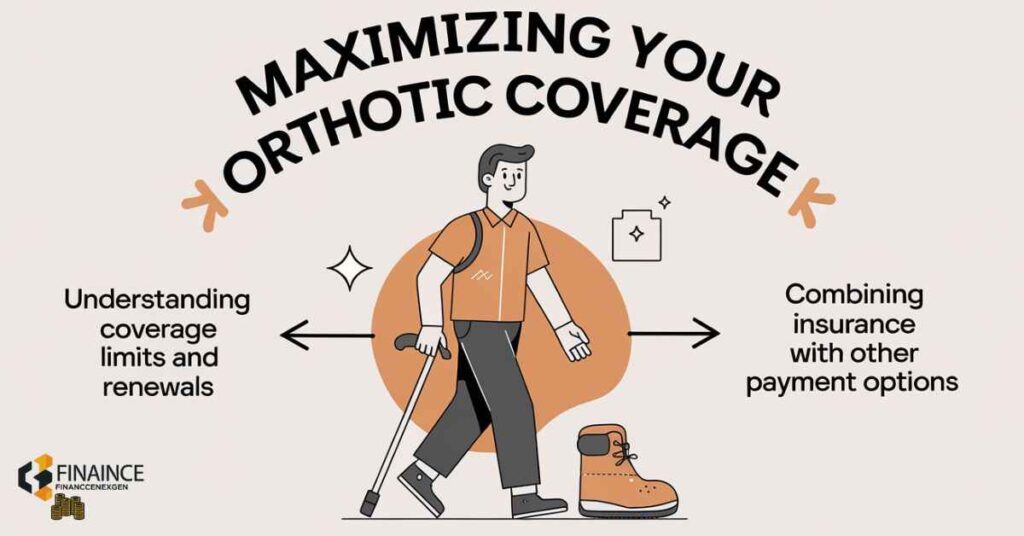Are you struggling with foot pain but worried about the cost of custom orthotics? You’re not alone. Many people avoid getting the foot support they need due to financial concerns. But what if you could get your orthotics covered by insurance?
In this comprehensive guide, we’ll walk you through the process of getting your custom orthotics coverage. From understanding insurance policies to navigating claims, we’ve got you covered. Say goodbye to foot pain and hello to affordable, insured orthotics!
What Are Orthotics and Why Do You Need Them?
Custom orthotic shoe inserts are more than just comfy insoles. They’re medical devices prescribed by doctors to treat specific foot problems. From plantar fasciitis to diabetic foot issues, orthotics can make a world of difference.
Dr. Jane Smith, a podiatrist in New York, says, “Custom orthotics can be life-changing for patients with chronic foot pain. They’re not just about comfort; they’re about correcting biomechanical issues and preventing further problems.”
The Financial Burden of Orthotics Without Insurance
Without coverage, custom orthotics can cost anywhere from $200 to $800 per pair. That’s a hefty price tag for many people. Plus, you might need new ones every few years.
John Doe, a patient from Chicago, shared his experience: “Before I got my orthotics covered by insurance, I was spending a fortune. It was either pay up or live with the pain. Getting insurance coverage was a game-changer for me.”
4 Steps to Get Orthotics Covered by Insurance

Getting your orthotics covered by insurance isn’t always straightforward, but it’s worth the effort. Here’s a step-by-step guide to help you navigate the process.
Step 1: Research Your Insurance Provider
Start by diving into your insurance policy. Look for terms like “durable medical equipment” or “orthotics.” If you’re unsure, give your provider a call. They can explain your coverage options for orthotic inserts insurance.
Pro tip: Keep a notebook handy during your call. Jot down important details and the name of the representative you spoke with.
Step 2: Choose the Right Insurance Plan
If you’re shopping for new insurance, pay close attention to orthotic coverage. Some plans offer better custom orthotics coverage than others. Don’t be shy about asking specific questions about limits and requirements.
Remember, the cheapest plan isn’t always the best if you need regular orthotic care. Consider your long-term health needs when choosing.
Step 3: Complete the Underwriting Process
Underwriting is how insurers assess your health risks. Be honest about your foot health history. If you’ve had previous foot issues, mention them. This helps ensure you get the right coverage for your needs.
Some insurers might require a medical exam. Don’t worry; it’s usually quick and painless.
Step 4: Finalize Your Insurance Agreement
Once you’ve chosen a plan and completed underwriting, it’s time to seal the deal. Review your policy carefully before signing. Pay attention to details about orthotics deductible and copay.
Mark your calendar for the start date of your coverage. You don’t want to order orthotics before your insurance kicks in!
Orthotics Insurance Coverage Requirements
Getting your orthotics covered by insurance often requires jumping through a few hoops. Here’s what you’ll typically need:
Medical Diagnosis and Prescription
Most insurers require a prescription from a podiatrist or orthopedic doctor. This proves that your orthotics are medically necessary, not just for comfort.
Dr. Tom Johnson, an orthopedic specialist, advises, “Keep detailed records of your foot issues. The more documentation you have, the smoother the insurance process will be.”
Technical Details and Documentation
Your insurer might ask for specifics about your orthotics. This could include:
- Materials used
- Casting method
- Gait analysis results
Upstep custom orthotics and similar providers often offer this information upon request.
Proof of Purchase and Order Information
Keep all receipts and order details. Your insurer will want to see exactly what you bought and when. This helps prevent fraud and ensures you’re getting coverage for eligible devices.
Insurance Providers That Cover Custom-Made Orthotics
Not all insurance providers are created equal when it comes to orthotic devices for medical conditions. Let’s look at some major players:
Aetna’s Orthotic Coverage Policies
Aetna orthotics policy typically covers custom-made orthotics when they’re deemed medically necessary. However, they have specific criteria:
- Must be prescribed by a qualified physician
- Used to treat a diagnosed medical condition
- Not primarily for comfort or athletic performance
Always check your specific plan details, as coverage can vary.
Using FSA and HRA for Orthotics
FSA orthotics eligibility and HRA orthotics reimbursement offer alternative ways to pay for orthotics. These accounts let you use pre-tax dollars for medical expenses.
Sarah Lee, a financial advisor, notes, “Using an FSA or HRA can save you money on orthotics. It’s like getting a discount equal to your tax rate.”
Medicare Coverage for Orthotics
For seniors, Medicare orthotics reimbursement can be a lifesaver. Medicare Part B orthotics coverage includes custom-molded shoes and inserts for people with severe diabetic foot disease.
Remember, you’ll typically pay 20% of the Medicare-approved amount after meeting your deductible.
Navigating the Claims Process
Filing a claim for orthotics covered by insurance can be daunting. But with the right approach, it’s manageable.
Gathering Necessary Documentation
Before you file, collect all your paperwork. This typically includes:
- Doctor’s prescription
- Detailed receipt
- Medical records related to your foot condition
Organize these documents in a folder or digital file for easy access.
Submitting Your Claim
Most insurers allow online claim submission. Follow their process carefully. Double-check all information before hitting submit.
Pro tip: Keep copies of everything you send. You never know when you might need them again.
Dealing with Claim Denials
Don’t panic if your claim is denied. It’s not uncommon. Review the reason for denial and gather any additional information requested.
John Smith, an insurance expert, advises, “Many denials are due to simple errors or missing information. Don’t be afraid to appeal the decision if you believe your orthotics should be covered.”
Read This Blog: FintechZoom GME Stock: Navigating the GameStop Phenomenon in 2024
Maximizing Your Orthotic Coverage

Getting the most out of your insurance for therapeutic orthotics requires some savvy.
Understanding Coverage Limits and Renewals
Most plans have annual limits on orthotic coverage. Know your limits and plan accordingly. Some insurers allow for renewals every few years.
Keep track of when you’re eligible for new orthotics. Your feet can change over time, so regular updates are important.
Combining Insurance with Other Payment Options
Sometimes, insurance doesn’t cover the full cost. Consider combining your coverage with:
- Flexible spending account for orthotics
- Health savings accounts
- Payment plans offered by orthotic providers
This approach can make high-quality orthotics more affordable.
Also Read: How to Get Zepbound Covered by Insurance: A Comprehensive Guide for 2024
Alternative Options When Insurance Won’t Cover Orthotics
If you can’t get orthotics covered by insurance, don’t lose hope. There are still ways to get the support you need.
Over-the-Counter Orthotics
While not as effective as custom options, OTC orthotics can provide some relief. They’re more affordable and don’t require a prescription.
Dr. Lisa Chen, a sports medicine specialist, cautions, “OTC orthotics can be a good starting point, but they’re not a long-term solution for serious foot issues.”
Direct-to-Consumer Custom Orthotics
Companies like Upstep custom orthotics offer at-home fitting kits. These can be more affordable than traditional custom orthotics while still providing personalized support.
The Future of Orthotic Coverage in Health Insurance
The landscape of health insurance for orthotics is evolving. More insurers are recognizing the long-term benefits of covering preventive care like orthotics.
Industry experts predict broader coverage in the coming years. Stay informed about changes in health insurance policies that might affect your orthotic coverage.
FAQ
Can I get orthotics covered if I have a pre-existing condition?
Yes, but it depends on your insurance plan. Many insurers cover doctor-prescribed orthotics for pre-existing conditions. Check your policy or speak with a representative for specifics.
How often can I get new orthotics under my insurance plan?
Typically, insurance plans allow for new orthotics every 1-3 years. However, this varies by provider and your medical needs. Keep track of your coverage dates.
Are custom-made orthotics always better than over-the-counter options?
Custom orthotics are generally more effective, especially for specific medical conditions. However, OTC options can be suitable for mild issues. Consult your doctor to determine what’s best for you.
Conclusion
Getting your orthotics covered by insurance might seem like a complex journey, but it’s worth the effort. With the right information and approach, you can step into comfort without breaking the bank.
Remember, your foot health is crucial to your overall well-being. Don’t let financial concerns stop you from getting the support you need. Use this guide, talk to your doctor, and reach out to your insurance provider. Your feet will thank you!







